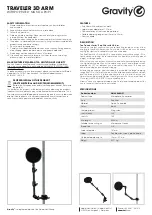
General Description
R&S
®
CMW-KM750/-KM751
14
User Manual 1173.9670.02 ─ 05
Select an ARB file (see above) and generate the TD-SCDMA downlink signal.
●
UE:
Select an appropriate test mode, so that the UE loops back the received data, via a
12.2 kbps RMC or DTCH (like downlink signal).
●
Measurement:
Adjust the settings so that the uplink signal can be measured (see
"Measuring an Uplink TD-SCDMA Signal"
, on page 11). Select the GPRF generator
as trigger source. Select the data pattern and transport channel mode corresponding
to the data source used for the ARB file.
The measurement compares the received data with the expected data pattern and pro-
vides the resulting error rates, asuming that all bit errors are caused by the RX part of
the UE. One data block contains 244 bits. They are mapped to four downlink timeslots
located in four subframes. As the first received data block is discarded, the measurement
length must comprise at least two data blocks (8 subframes) and the minimum measured
number of subframes for RX measurements equals 8 (see parameter
on page 41). If a smaller value is set, 8 subframes are measured nevertheless.
Enable the BER view only when needed. It slows down the multi evaluation measurement
considerably.
3.3 Multi Evaluation List Mode
The TD-SCDMA multi evaluation list mode requires option R&S CMW-KM012. In this
mode the measurement interval is subdivided into segments, according to basic uplink
signal properties. The list mode can be used to test different modes supported by a UE
(e.g. subframe structures or modulation types) or to cover a wide range of expected
nominal powers or RF frequencies in a single measurement.
Each segment contains an integer number of subframes and is measured at constant
analyzer settings. The figure below shows a series of three segments with different
lengths, expected powers and the listed signal properties. Orange rectangles depict sub-
frames. The maximum number of users per timeslot, the frequency band and the RF
frequency can also be specified per segment.
Multi Evaluation List Mode















































